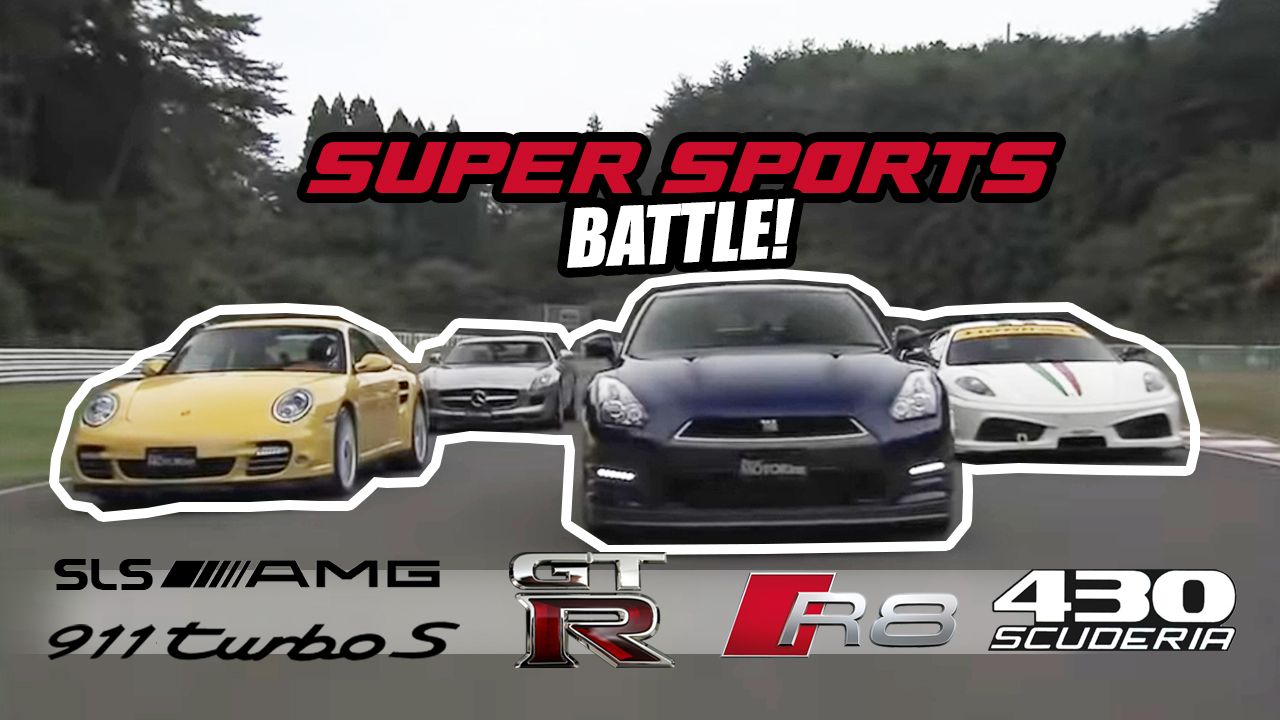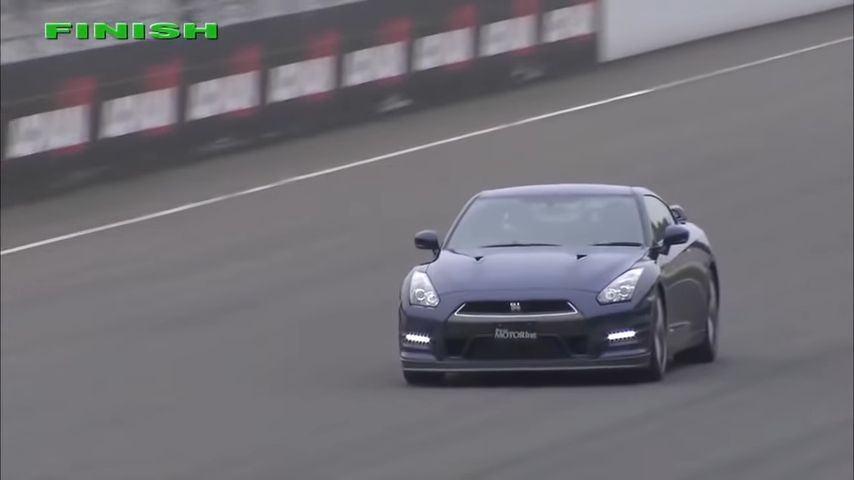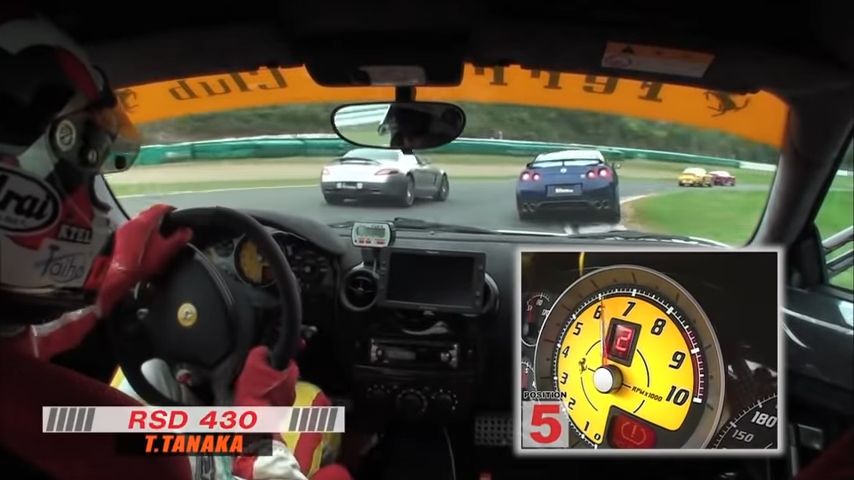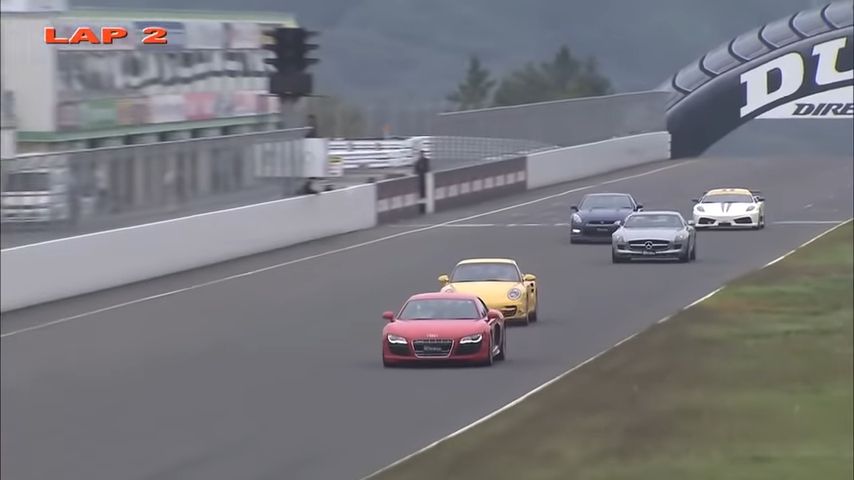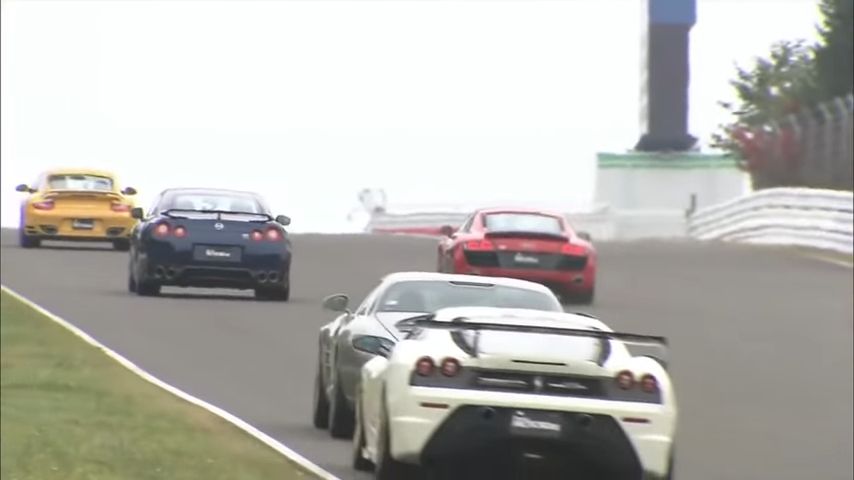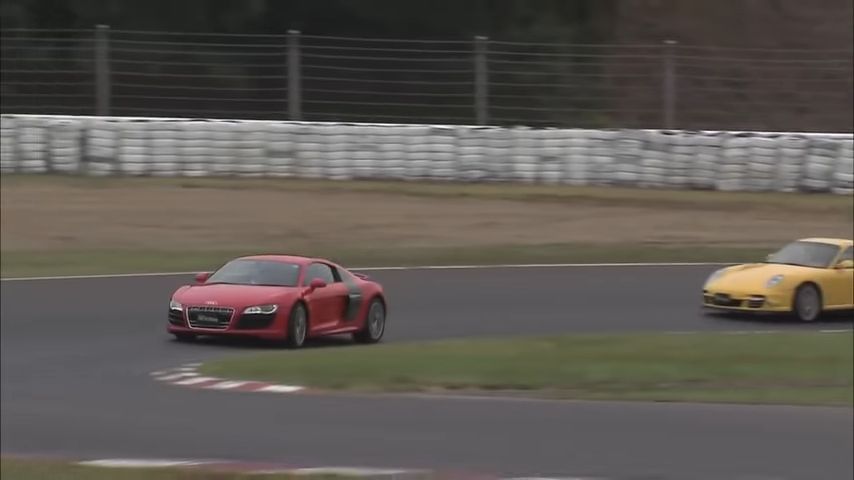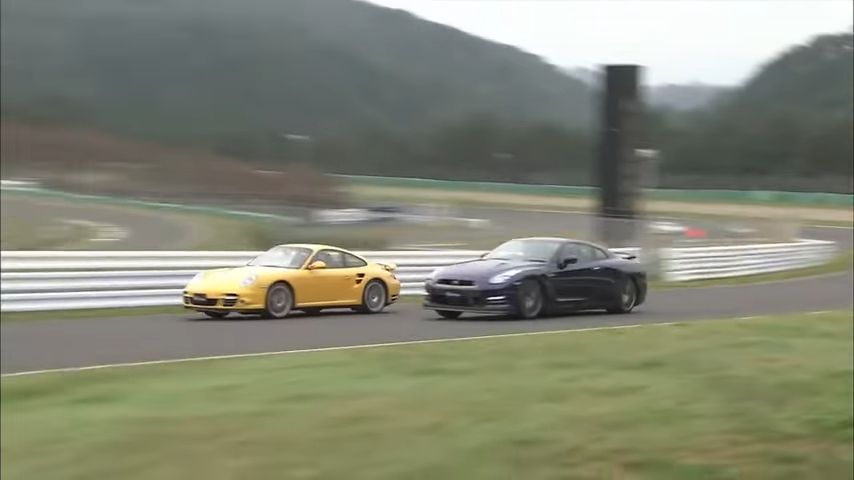If you are browsing for quality car content on YouTube you may have come across Best Motoring’s official channel. It is, essentially, Japan’s version of Top Gear, only the cars are being driven by professional racing drivers, among which Keiichi Tsuchiya, also known as Drift King. This particular race pits a 2011 Nissan GT-R against some of the best European sports cars from the 2010s, in a four-lap race around the Japanese Sugo Circuit.
The Contenders
Nissan GT-R
Starting from the fifth position is the Nissan R35 GT-R, driven by Formula 3 and JGTC racing driver, Naoki Hattori. In 2011, the R35 GT-R experienced its first significant update. The 3.8-liter twin-turbo V-6 now produces 530 horsepower and 451 pound-feet (612 Nm). At 3,798 pounds (1,723 kg), the GT-R is still more on the heavy side, but its incredible chassis and close-ratio, six-speed dual-clutch automatic make it a formidable opponent, on a race track.
Ferrari F430 Scuderia RSD
Starting from position four is the Ferrari 430 Scuderia RSD. At 2,954 pounds (1,340 kg), the Italian stallion is the lightest of the bunch. However, it’s also the least powerful, scoring a 4.3-liter normally-aspirated V-8 that makes 510 horsepower and 346 pound-feet (469 Nm). The gearbox is a six-speed “F1”, which is essentially a robotized manual. Being an RSD, the Ferrari benefits from a more aggressive body kit, comprising of a new lip spoiler, chunkier side skirts, and a tall rear wing.
Porsche 911 (997.2) Turbo S
Grid position three is taken by the 911 Turbo S. Considered by many to be the last old-school 911, the 997.2 Turbo S is the first model to feature the PDK gearbox – Porsche’s version of a dual-clutch automatic. This is also the GT-R’s most direct competitor, as well as its toughest rival. It also features all-wheel drive and its 3.8-liter twin-turbo flat-six makes an identical 530 horsepower. Torque, however, is higher than the GT-R and is rated at 516 pound-feet (700 Nm). The Porsche is also lighter, at 3682 pounds (1,645 kg).
Mercedes SLS AMG
Grid position two is occupied by AMG’s first solo project – the front-mid engine SLS AMG. The spiritual successor to the 300SL is also the last supercar from Mercedes to come with the normally-aspirated 6.2-liter V-8. In this early version, the mighty V-8 develops 571 horsepower and 479 pound-feet (650 Nm), while mated to a seven-speed dual-clutch automatic. At 3,571 pounds (1,620 kg), the Mercedes doesn’t have much of a weight advantage. While the SLS AMG excels at straight-lien acceleration, its chassis is least suitable for the racetrack.
Audi R8 5.2
The Audi R8 starts from pole position. This being a non-GT version, the 5.2-liter V-10 makes 525 horsepower and 391 pound-feet (530 Nm). This being a 2011 model, it comes with the R-Tronic six-speed robotized manual. It was not until 2014, Audi R8 got the DSG dual-clutch automatic. That said, it matches the SLS AMG’s 3,571-pound (1,620 kg) weight figure, but comes in a rear-mid-engine layout and with a much sportier chassis.
The Race
The Sportsland SUGO circuit measures 2.3 miles (3.7 km) in length and looks like a mini version of the Nordschleife. Similar to the iconic German racetrack, the Japanese circuit is surrounded by a forest and in some areas, features barely any safety run-off areas.
Lap one sees the Porsche 911 Turbo S almost managing to secure an early lead. However, the Audi R8 closes the door, in the first corner. In the meantime, GT-R manages to slip past the Ferrari F430, leaving the Italian in last place. The long right-hand sweeper, leading to the finish line showcases Audi’s superior cornering performance, compared to the 911.
Lap two showcases the lighter Ferrari’s ability to brake much later than the GT-R. However, it’s not enough to regain the fourth position from Godzilla. The Drift King struggles to keep the SLS AMG’s back end in place, allowing the GT-R to take third place. Meanwhile, Porsche exits on the back straight at a higher speed, allowing it to overtake the normally-aspirated Audi.
Lap three starts with the Nissan GT-R taking second place from the Audi R8. Godzilla manages to overtake the mid-engine Audi from the outside, no less. The decisive moment was when both cars up-shifted. Godzilla’s next target is the mighty 911 Turbo S. However, exiting on the back straight reveals Porsche’s superior straight-line acceleration. Porsche’s PDK gearbox is quicker. GT-R makes another attempt to overtake the Turbo S, at the same place it took the Audi, but once again fails.
The fourth and final lap starts with the Nissan out-braking the Porsche in a rather risky move, allowing it to finally secure the lead. After a few corners, the GT-R gains a significant lead. The Porsche 911 Turbo S may be faster in a straight line, but the Nissan GT-R is much more composed in corners, allowing it to maintain momentum. More surprising is the Ferrari, which almost manages to overtake the much heavier and softer Mercedes.

